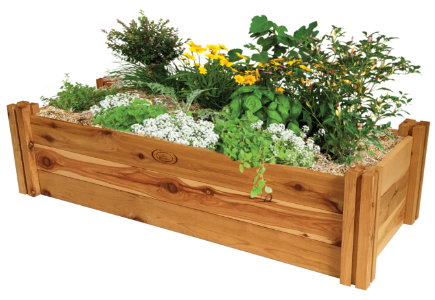Creating a sustainable elevated garden bed in an industrial space can be a rewarding and environmentally friendly endeavor. Not only does it provide a green space in an otherwise concrete environment, but it also offers the opportunity to grow fresh produce or beautiful flowers. In this article, we will explore the steps to build a sustainable elevated garden bed for your industrial space, along with the benefits it can bring.

Choosing the Right Location
Before you start building your elevated garden bed, it's essential to choose the right location within your industrial space. Look for an area that receives adequate sunlight and is easily accessible for maintenance. Additionally, consider the weight-bearing capacity of the location, especially if you're planning to build a larger garden bed.
When selecting the location, ensure that it aligns with the overall aesthetic and purpose of your industrial space. The garden bed should complement the surroundings and contribute to a harmonious environment.
Materials for Building the Garden Bed
When it comes to constructing a sustainable elevated garden bed, the choice of materials is crucial. Opt for sustainable and durable materials such as reclaimed wood, composite lumber, or galvanized steel. These materials not only provide longevity to your garden bed but also contribute to the sustainability aspect of the project.
Consider using recycled materials or repurposed items to build the garden bed, adding an eco-friendly touch to the project. This approach aligns with the industrial space's sustainability goals and promotes a circular economy mindset.
Implementing Sustainable Practices
Once the garden bed is built, it's important to focus on sustainable practices for its maintenance and upkeep. Utilize organic soil and compost to nourish the plants, avoiding chemical-based fertilizers and pesticides. Embrace water-saving techniques such as drip irrigation or rainwater harvesting to minimize water usage.
Integrating companion planting and natural pest control methods can also contribute to the sustainability of the garden bed. By creating a balanced ecosystem within the elevated garden bed, you can reduce the reliance on external inputs and promote a self-sustaining environment.
Engaging the Industrial Community
Building a sustainable elevated garden bed in an industrial space provides an opportunity to engage the surrounding community. Consider organizing workshops or educational sessions on sustainable gardening practices. Encourage employees and local residents to participate in the maintenance and cultivation of the garden bed.
Furthermore, explore the possibility of donating a portion of the produce grown in the garden bed to local food banks or community organizations. This not only fosters a sense of community within the industrial space but also contributes to addressing food insecurity in the area.
In conclusion, creating a sustainable elevated garden bed for your industrial space is a multifaceted endeavor that involves careful planning, mindful material choices, and a commitment to sustainable practices. By integrating such a green space within the industrial environment, you can enhance the overall well-being of the space and contribute to a more sustainable future.








